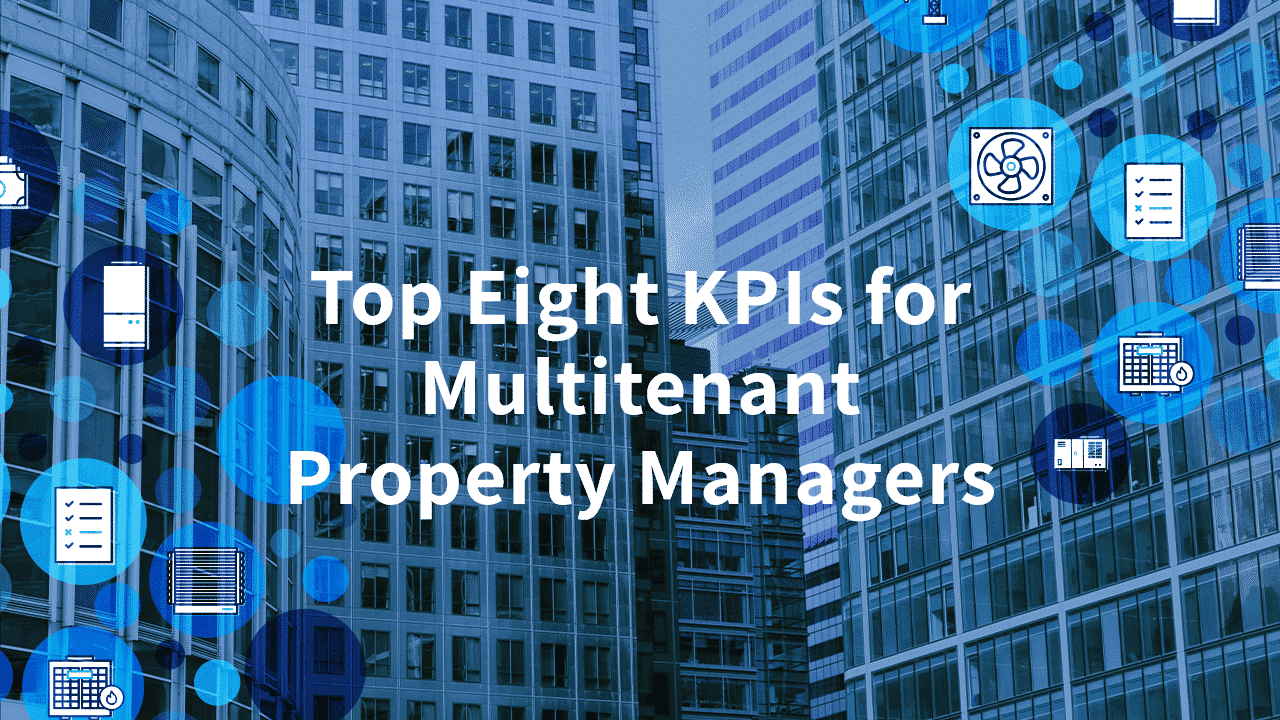Key performance indicators (KPIs) are essential tools for measuring the success of a property management business. They provide valuable insights into how well a company is performing and can help identify areas for improvement. For multi-tenant property managers, several key KPIs should be closely monitored to ensure multiple properties’ efficient and profitable management. These KPIs include occupancy rates, rental income, tenant retention, and expenses. By tracking these metrics, multi-tenant property managers can make data-driven decisions to improve their business operations and drive revenue growth.
In this article, we will explore the top KPIs for multi-tenant property managers and discuss how they can be used to measure success and improve efficiency in communication, maintenance, and rent collection.
In a competitive housing market, the success of a multifamily property management company depends on hitting a multitude of benchmarks. Every aspect of the business must be a well-oiled machine in order to ensure continued profitability. Therefore, multitenant property managers should track important key performance metrics to better gauge the health of the business and address areas of opportunity.


What are KPIs?
A Key Performance Indicator (KPI) helps measure a company’s success and illustrate progress toward its goals. KPIs include numerical data that quantifies performance. By tracking KPIs, a property manager can determine the company’s opportunities and develop strategies to address those challenges. KPIs also can help multitenant property managers to accurately gauge their competition and to better allocate their budgets for the most fruitful returns on investment.
By tracking KPIs over time, property managers can assess how various growth strategies and activities are impacting their businesses, and they can make adjustments for further enhancement. What’s working, and what still needs improvement? When measuring KPIs, the progression is more important than any individual data.
Top KPIs for Multitenant Property Managers
An endless number of KPIs can be tracked when managing multitenant properties – enough to overwhelm even the most competent of property managers. Between occupancies, rents and vacancies, who can choose the most important indicators to monitor? While every property is unique, the following are eight of the top KPIs for multitenant property managers:
1. Net Operating Income
It’s impossible to assess the success of any company without identifying its financial indicators. KPIs like net operating income measure a company’s overall health by comparing its costs to its revenue. The NOI is calculated by adding all sources of income and revenue, then subtracting operating expenses from that total. If expenses are greater than the income, it’s time to reassess your costs and try to reduce overhead and other expenses.
2. Average Renter Lifetime Value
Renter lifetime value is a beneficial KPI for multitenant property managers because it tracks how much revenue can be expected for every new renter. The metric considers the revenue earned per unit, which divides the property’s total revenue by the number of units. It then compares this to average term of occupancy. For example, if a property’s average revenue per unit is $3,000, and the average renter stays in their lease for 18 months, then then average renter lifetime value would be $54,000.
3. Occupancy Rates
Unoccupied properties aren’t earning money for your company, and therefore occupancy rates are an important KPI for multitenant property managers. Ideally, you should attain to keep occupancy rates in line with national averages, which are about 96% across the multi-family rental market. Occupancy rates can be determined by dividing the total units rented by the number available to rent. Occupancy rates that remain above the national average or that continually increase are signs of a thriving company.
4. Renter Churn Rate
How often are your renters cancelling their leases? It costs money to replace tenants, and time in-between occupancies equals a loss of revenue. Therefore, multitenant property managers should monitor their renter churn rates when tracking their KPIs. Renter churn rate is a simple KPI to calculate as it’s determined by dividing the number of renters who cancelled their leases by the total number of renters in the year.


5. Average Days to Lease
How long do units remain empty in between tenants? The average days to lease is a performance metric that measures how long each unit spends vacant after the previous renter vacates. The longer each unit of a multifamily property remains vacant, the more money is lost. After all, the property company will still be paying its costs to maintain the unit while no rent is being received. The average days to lease is an important KPI to consider when evaluating other metrics such as the average value of each renter and the churn rate.
6. Average Arrears
Getting all your tenants to pay rent on time can be a challenge for any multifamily property manager. Arrears indicates the amount of money owed to the company, usually made up of past-due rents. It’s important to track arrears because they have a negative impact on a company’s cashflow – they represent money otherwise included in revenue totals and budgets that is actually unavailable. Therefore, a high average arrears can hinder a company’s growth. Property managers should strive for arrears that steadily decrease.
7. Average Repair and Maintenance Costs
How much do you pay to maintain your properties each month? Maintenance and repairs are one of a property manager’s highest costs and an important KPI to track. These costs include money paid for labor, tools, materials and equipment. If average maintenance costs per property are too high, performing more routine inspections and preventative maintenance might help decrease this KPI.
8. Customer Satisfaction Scores
Financial data isn’t the only measure of success marked by KPIs. After all, without satisfied customers you won’t have any rents to collect. Therefore, it’s important to measure customer satisfaction on a regular basis. Send a short survey to your tenants, asking about their experience renting from your company. Be sure to include questions about their likes and dislikes of not only living on the property but also working with the property management company. Offer them a way to offer suggestions on how you can improve in the future. Compare resident satisfaction scores before and after strategic changes to measure success. For example, multifamily communities have experienced a 20% increase in resident satisfaction after implementing Motili’s Asset Management program.


FAQ – KPIs for Multi-Tenant Property Managers
What are the most important KPIs for multi-tenant property managers?
Occupancy rates, rental income, tenant retention, and expenses are some of the most important KPIs for multi-tenant property managers.
How can KPIs help improve the management of multiple properties?
By tracking key metrics such as occupancy rates, rental income, tenant retention, and expenses, multi-tenant property managers can make data-driven decisions to improve their business operations and drive revenue growth.
How often should multi-tenant property managers review their KPIs?
It’s recommended to review KPIs on a regular basis, such as monthly or quarterly, to ensure that the management of multiple properties is on track and to make adjustments as needed.
What is the occupancy rate KPI and why is it important?
Occupancy rate is the percentage of units that are occupied in a property. It’s important because it gives an indication of the demand for the property and the effectiveness of the marketing and leasing efforts.
How can I calculate the rental income KPI?
Rental income KPI is calculated by subtracting the operating expenses from the rental income.
How can tenant retention KPI be measured?
Tenant retention KPI can be measured by calculating the percentage of tenants who renew their lease.
What does KPI tell about the property management?
Expenses KPI tells about the costs incurred by the property management, such as maintenance, repairs, utilities, and insurance. By tracking expenses, multi-tenant property managers can identify areas where costs can be reduced.
Motili HVAC Multi-Tenant Property Managers Solutions
Motili’s platform is one of the latest innovative solutions that allows property owners and managers to efficiently manage HVAC multi-family technology projects for multiple property types like apartment communities and commercial buildings.
Sustainability, automation, and data management are core values upheld throughout the HVAC process.
The Motili solution includes a web platform that provides detailed work status and reporting, automated scheduling and contractor dispatching, text and email notifications, and a mobile app for contractors. It can easily integrate with existing client systems. Our finely-tuned process boosts efficiency, reduces cost, and can ultimately improve customer satisfaction.
Motili’s cutting-edge technology will help property owners manage their HVAC and hot water systems through technology, proactive and reactive repair, and replacement projects.
The experts at Motili possess the knowledge and tools to properly guide you through all types of HVAC projects.












